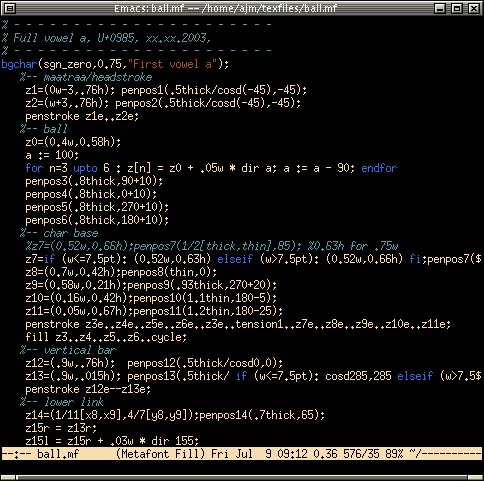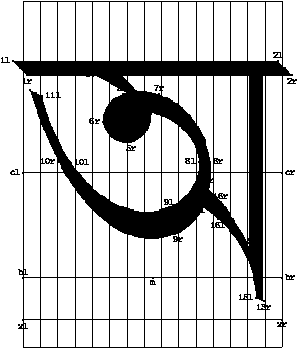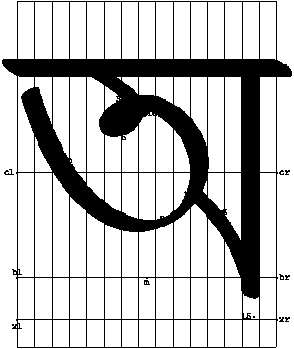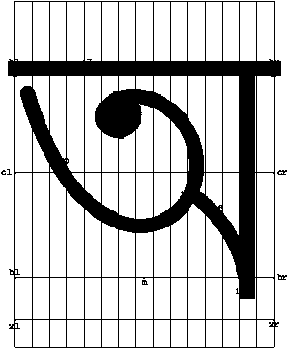
| ⟪ Bengali typeface ⟫ | «Typography» | «Home» | «Map&Rev» |
It was 2002. I came to know of Donald Knuth´s TeX, the revolutionary typesetting program. Revolutionary I thought it was, as it proposed to arm myself up with a powerful method of putting multi-lingual text together which will never get mangled at a single keystrokes of Enter or Backspace as it does in Microsoft Word.
I spent long hours, clicking across web pages to know what distribution of TeX I could keep running on my Windows 9.x operating system. After a few days, I found one — MiKTeX. It was in version 1.20e. I got it on my hard disk, but failed to make it running. There was a glitch with the installer.
Soon I found the solution off the Net. Certain file needed to be downloaded to overwrite the older one. I LaTeX’d my first LaTeX file and received a nicely formatted ✶.dvi file.
I started downloading hundreds of web pages — tutorials, guides, hints and tips — to learn LaTeX. I also dared to write some LaTeX macros, rarely with success. I could only use \renewcommand to define something that is easy doing with style files that ship with standard distribution.
I found two Bengali metafonts around — one by Abhijit Das of IIS Bangalore and the other by Polash Boron Pal of Saha Institute of Nuclear Physics. While the font of Abhijit Das is good for personal communications or office automation, the font of Polash Boron Pal can be used for publication of books. His book called ধ্বনিমালা, বর্ণমালা has been typeset in TeX using his own Metafont.
I decided to design my own and planned to release the font into public domain later. At this point, I came across a web page prepared by the University of Cambridge computing services leaflet captioned "Introduction to TeX." I was amazed to read it up and decided to switch to Plain TeX.
I download plain TeX primers and tutorials in *.dvi or *.tex format and read them over and over again and spent long hours practising writing Plain TeX codes. In couse, I downloaded the TeXbook and the Metafontbook off the Net, and started reading them on-screen. I wanted to know more of Metafont and had the Metafontbook printed and bound.
I started reading the book, slowly, only to my frustration that I did not understand much of what Knuth says because of my poor ability at mathematics. I started reading the pages over and over again. I did some experiments on-screen and got the Metafont program running.
It was time for me to go deeper. I learnt Emacs, of course GNU; I glanced through dozens of Metafont works of other people. I learnt the internal mechanism, the macros, the proofing and all the chores, to an extent that will serve my purpose. I could also learn Plain TeX to an extent that I now can write simple-to-trifle difficult macros for my typesetting chores. What was interesting of the process was that I forgot using LaTeX and its commands.
By that time, I could understand about 45 per cent of the Metafontbook, and I thought this was enough for me to design a Bengali font. I started keeping notes on the look of Bengali faces. I bought a protractor, a magnifying glass, a scale and two complete founts of Bengali faces from the Old Town of the capital.
I had an old bound exercise book which I planned to use for keeping notes. I also misplaced about a dozens of text files, detailing the plan, process, number of cases, modes, methods, macros and all such things for a good Bengali metafont.
In the meantime, I wrote hundreds of lines of Emacs-Lisp to work on the metafont project. I tidied my Emacs on Linux, and the teTeX distribution for metafont proofing by hacking into some in-built codes.

I wrote some proof of concept codes and that worked. I started having nice faces displayed on the screen. But before buckling down to a real project, I tried playing with symbols like octothorp, section, pilcrow, mathematical and typographical signs and one or two Bengali characters.
But designing a full fount was still a distant hope and there remained a lot to learn. So I embarked on a project of making a Santali metafont. Santali is customarily written in Bengali. English, Nagari and Oriya scripts. One of their social reformers, probably in the fashion of Guru Nanak, devised an alphabetic writing system called Ol Cemet’ or Ciki.
I bought books and started learning the script. I tried to understand every piece of Ol Ciki text I could lay my hands on. Then I came up with a workable set of Ol Ciki characters.
I keep learning the Santali script and modified and revised the codes for hundreds of time. I learnt how to resize the faces with macros, how to handle the proofing, how to offset the position of character in a cell and other such seemingly useless, important things.
Then I decided to parameterise the whole font design thing, splitting the codes into several small files, with definitions in one, codes in another and macros in yet another file so that handling and revising later can become easy.

|

|

|

|
| Four faces produced from the same code. | |
I could even successfully parameterise the faces; based on the same code, or program, for a character, I produced four faces by tweaking some variables.
I am still working on it and have almost finished the groundwork for the grand project that will only be successful if the font can easily be used in quality publication.
Rev.: vii·xi·mmxxii